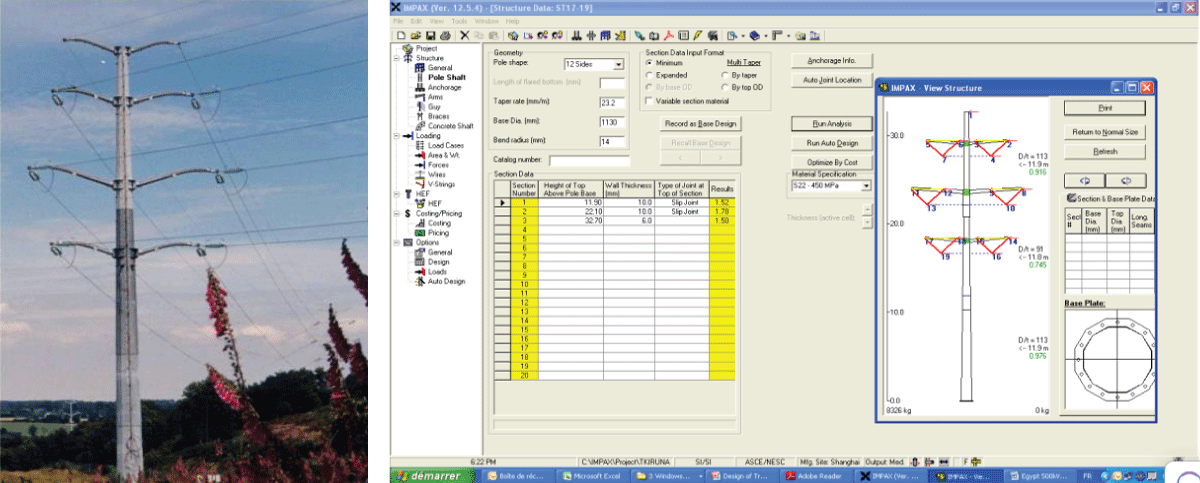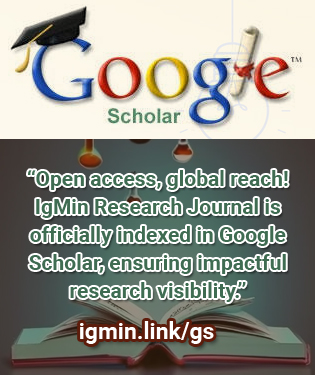Abstract
This research was conducted to compare the use of lattice towers and polygonal monopods in the electricity grid infrastructure of the National Society of Electricity (SNEL SA) in the Democratic Republic of Congo. In the face of vandalism and increasing energy demand, it is crucial to analyze the security and reliability of the infrastructure. The study used an analytical approach, including geometric assessments and simulations with Impax software to model the performance of the towers. The results showed that monopods offer significant advantages in terms of resistance to vandalism, maintenance costs, and aesthetics. In conclusion, this research highlights the importance of considering monopods as a viable solution to improve the security and performance of electrical infrastructure. The lessons learned indicate that appropriate design choices can reduce economic losses and optimize energy supply.




![Geometry of the monopod flag supports [8-11]. Note: Espace entre consoles- Space between consoles; Hauteur Sous console- Height Under console; Saillie- Projection; Epure de balancement- Swinging outline.](https://www.igminresearch.com/articles/figures/igmin291/igmin291.g001.png)
![Diagram of forces and moments on monopod flag supports [1,2,8-11].](https://www.igminresearch.com/articles/figures/igmin291/igmin291.g002.png)
![External Load Diagrams Case 3-Combined Wind and Ice and Case 5-Safety Loads-Broken Wire Condition [1,4,10,12].](https://www.igminresearch.com/articles/figures/igmin291/igmin291.g003.png)
![Diagrams of moments and applied forces [1,2,4,5,10,11].](https://www.igminresearch.com/articles/figures/igmin291/igmin291.g004.png)
![ASCE method [1,2,8,9,10,11].](https://www.igminresearch.com/articles/figures/igmin291/igmin291.g005.png)
![Diagram of the arrow of a pylon under tension [1,9,12,13].](https://www.igminresearch.com/articles/figures/igmin291/igmin291.g006.png)
![Section chain in hexagonal shapes by increasing the diameter or thickness [9,12,14].](https://www.igminresearch.com/articles/figures/igmin291/igmin291.g007.png)

![Representation of the section according to the Aeff distribution under axial force and Weff under bending moment [1,2,8-11].](https://www.igminresearch.com/articles/figures/igmin291/igmin291.t001.png)


